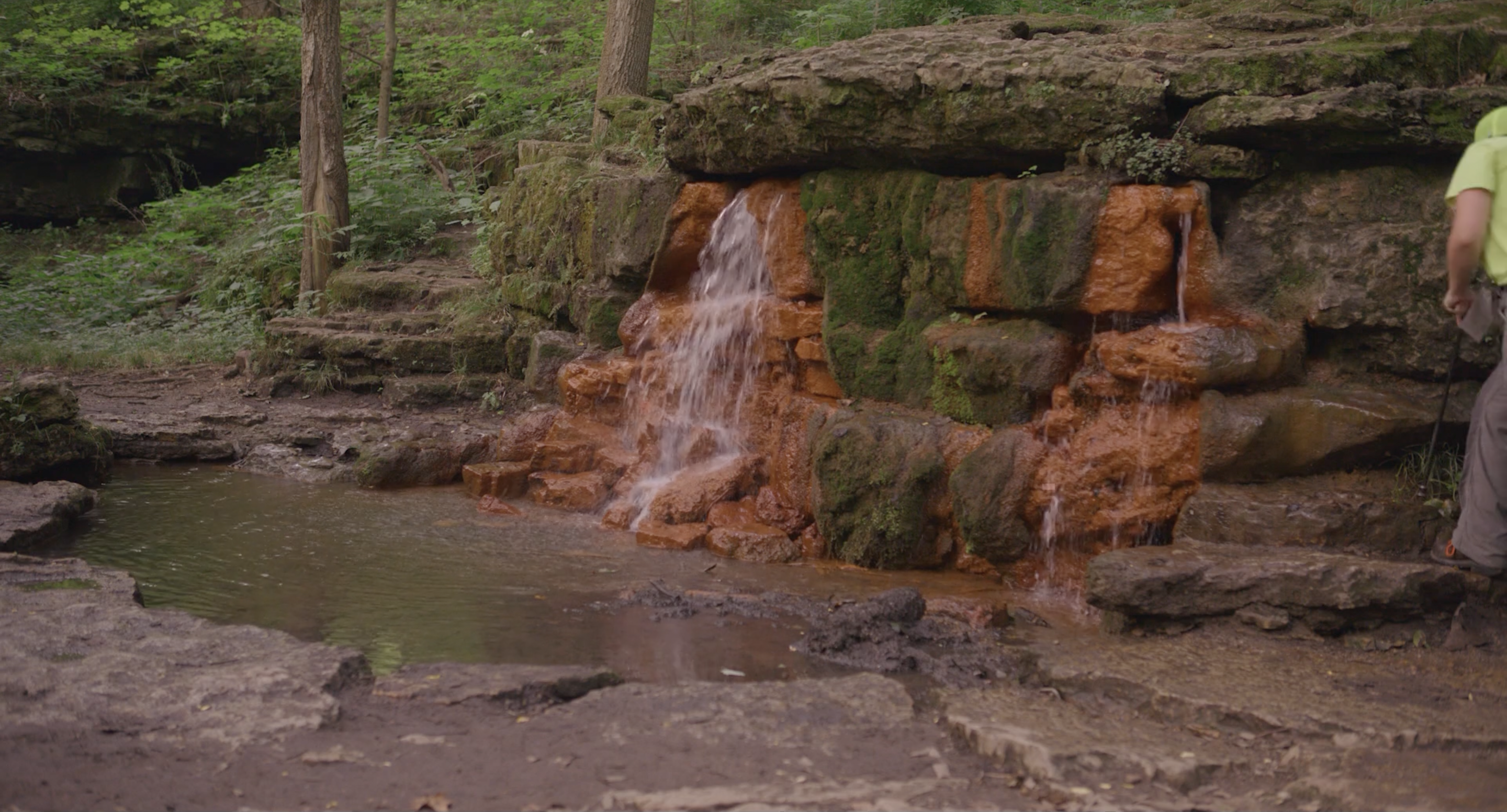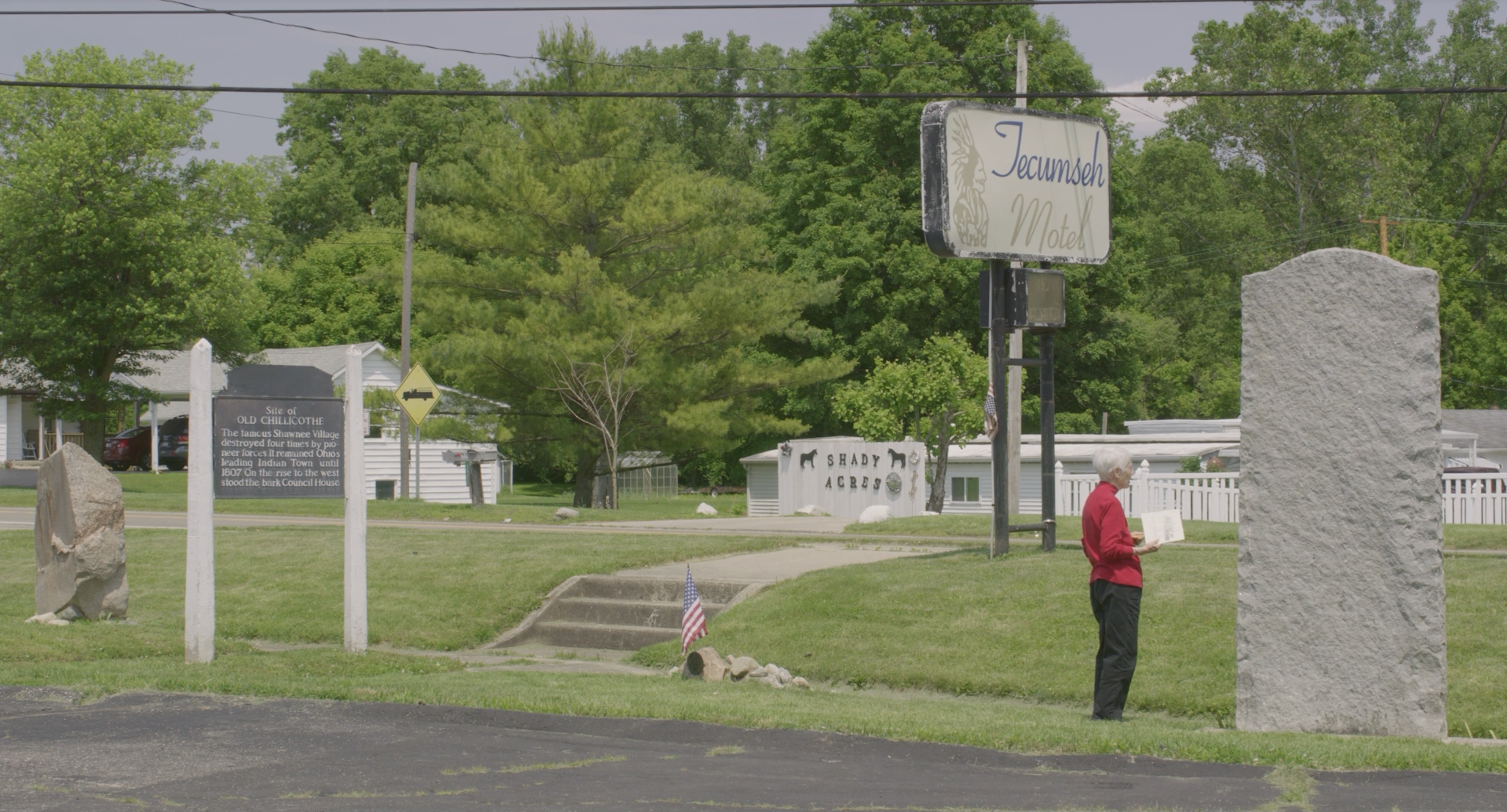
Sound Spring / 2024
soundtrack and album (Kuyin)
audio︎ (coming soon)
Performed and recorded by Maya Bennardo (violin), Daniel Fishkin (daxophone), Will Lang (trombone), Ryan Packard (percussion), and Anthony Vine (electric guitar).
Album mixed and mastered by Michael Hammond at Figure 8. Film soundtrack mixed and mastered by Mike Kennedy.
The soundtrack for ‘Sound Spring’ was created with the generous support of The Johnstone Fund for New Music.
A Sound That’s Given
Anthony Vine
Sound Spring did not need a soundtrack. The film came to me steeped in sonority. Sounds of storytellers unwound in midwestern flourishes. Words sometimes slipped out of time and into the mouths of others. Every enunciation, tick, and hesitation cut sharply against studio-grade silence. Between speech was noise: water falling, trucks idling, roller-skates gliding, projectors spinning, forests vibrating. Despite its variety, this sonorous world was spacious. Emptiness was maintained, imparting the ear-ringing quietude and wind-whipping openness of a rural Ohio town, Yellow Springs.
The soundtrack, I felt, should only make the film be heard more clearly and deeply, not add or affect. I sifted through Sound Spring's "location sound," listening to mechanical hums and clanks, murmurs and rushes of nature. Daniel, Maya, Ryan, and Will listened to these sounds, played alongside them, and recorded the results. "Tune to the idling truck." "Imagine each body of water as a tambura." "Match the sound of Rose’s plates." In performing the soundtrack, the musicians became part of the film, something true of all films, but here, doubly so.
Releasing the soundtrack as an album demanded a rearticulation of the material, something responsive and specific to the recorded medium. Without the constraints of the film, I let the musicians' recordings sprawl out fully, and overlaid them with "location sound" from both the film and cutting room floor. Braiding these two sources together created unexpected narrative dramas. Donna’s bicycle frayed apart skittishly. The environs surrounding Karen muttered incessantly. Electric razors in the barbershop hummed deeply. In this way, every track became a scene of its own, evoking characters and places from traces of the film.

Sound Spring . .
Catalina
I had recently moved to Yellow Springs to teach at Antioch College and I wanted to get to know the villagers. I had been doing talk therapy, psychoanalysis (my own)—this time I wanted to be the listener. Neenah Ellis, a local NPR producer, taught me how to give my full attention as a listener: don’t fidget or write, always make eye contact. I interviewed 12 residents who I found through one connection or another. They told me important (and some less “important”) histories, through their own remembering, however unsure. Later we staged visual scenes with this original audio.
I like the way people talk. The honest voice makes good aesthetic material:
Karen McKee; Paul Graham; Ellias Kelley; Rose Pelzl; Charles Arthur Williams; Shane Creepingbear; Anne Bohlen; Donna Denman; Jalyn Roe; Sumayah Chappelle; Rukiya Robertson; & Talon Silverhorn— the clear sound of their voices, close in your ear,
like god whispering to you.
At the end of the film, a voice whose body we’ve seen. Talon Silverhorn is nowhere to be seen, haunting around the film frame, not within it, instead behind, beside (in only the way that sound, and not vision, can be). This is a film of layers and ghosts.
The recording is left.
